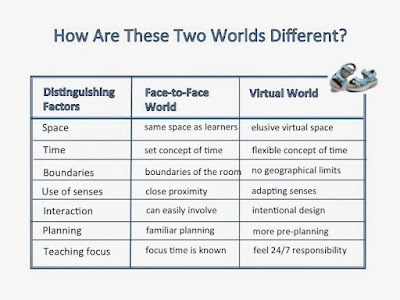Online teaching and learning should be an experience where presence is felt by both instructors and learners. How is presence created?
Step 7, Phase Two. During the past weeks, you’ve been introduced to the 7 Steps to Creating Presence in Online Courses and the first of the Four Planning Phases that will help you develop the course learning experience. Last week we looked at phase one – “before the course begins.” This week we’ll look at phase two – “during the course.” The Incorporation Chart for this phase, below, illustrates how our instructor used the presence Model and Framework for the: Course Sequence, Course Activities, Types of Experience, and Modes of Presence.
It’s helpful while you’re looking at the Chart to refer back to the Framework (which includes the Model) in Step 6.
Reference
Lehman, R. M., & Conceição, S. C. (2010). Creating a Sense of Presence in Online Teaching: How to “Be There” for Distance Learners. Jossey-Bass.













